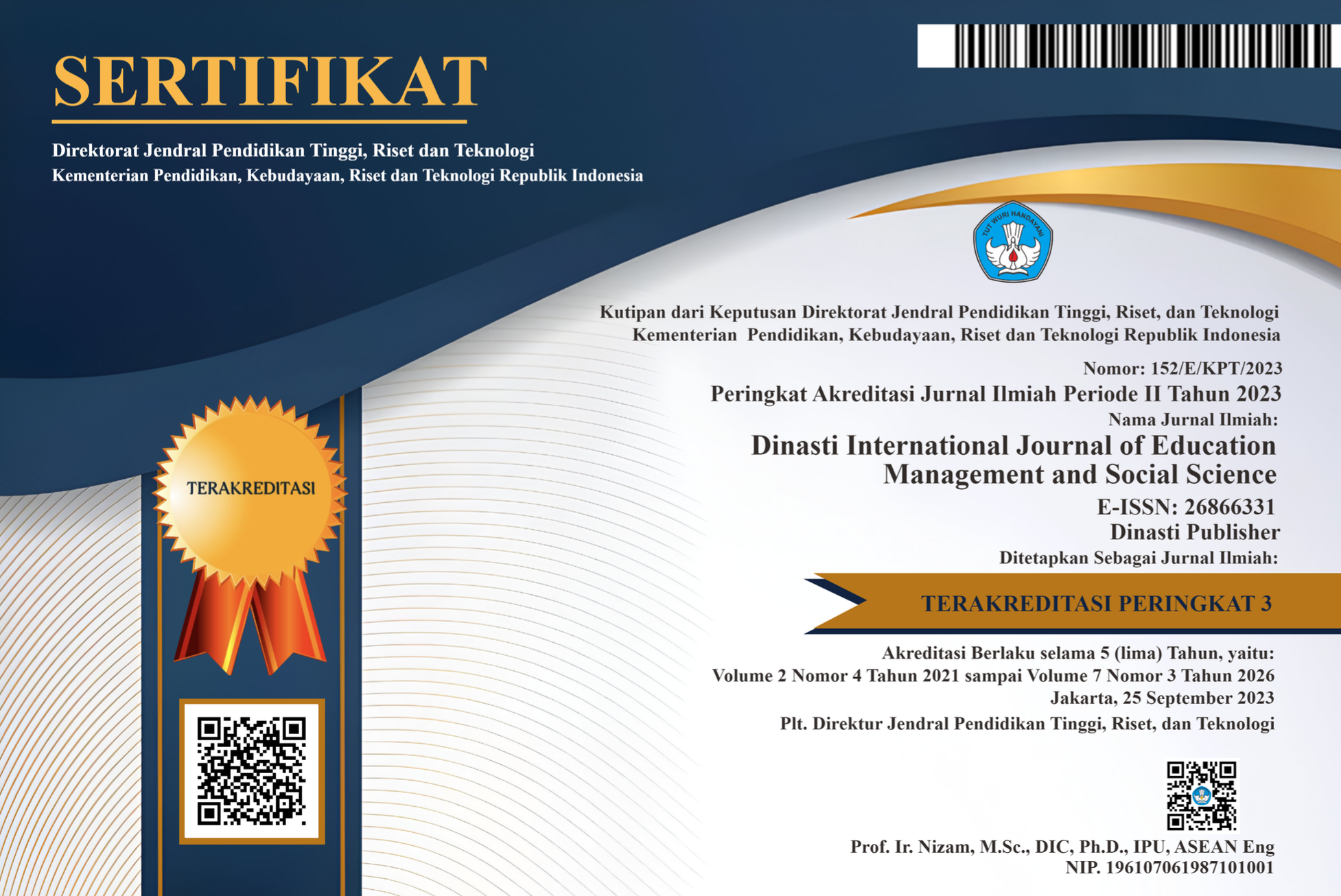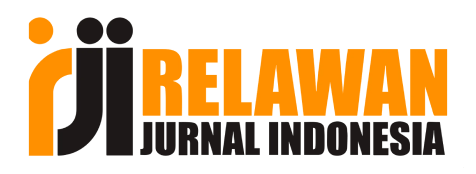The Influence of Emotional Intelligence, Self Efficacy, and Employee Engagement on Employee Commitment in Digital Sector
DOI:
https://doi.org/10.38035/dijemss.v5i6.2846Keywords:
Self-Efficacy, Emotional Intelligence, Organizational Commitment, Organizational Commitment, Digital SectorAbstract
This study examines the impact of Emotional Intelligence, Self-Efficacy, and Employee Engagement on Organizational Commitment among employees in digital companies, utilizing data from 147 respondents. Emotional Intelligence significantly enhances Organizational Commitment through Employee Involvement. Employees with high EI are better at building strong interpersonal relationships and communicating effectively, which leads to higher levels of involvement and commitment to the organization. This is supported by the mediation effect found between EI and Organizational Commitment, emphasizing the importance of employee involvement. Self-Efficacy also positively influences Organizational Commitment through its effect on Employee Involvement. Employees with high self-efficacy are more confident and involved in their work, resulting in greater attachment and commitment to their organization. Direct relationships were found between Emotional Intelligence and Employee Involvement, indicating that higher EI leads to increased engagement and proactive behavior in the workplace. This further contributes to better job performance and organizational commitment. Additionally, Employee Involvement significantly enhances Organizational Commitment. However, Self-Efficacy does not have a significant direct impact on Employee Involvement, suggesting that other factors, such as organizational culture or leadership style, might play a more crucial role. Overall, fostering Emotional Intelligence and self-efficacy is essential for enhancing Employee Engagement and Organizational Commitment in digital companies.
References
Aghdasi, S., Kiamanesh, A. R., & Ebrahim, A. N. (2011). Emotional intelligence and organizational commitment: Testing the mediatory role of occupational stress and job satisfaction. Procedia - Social and Behavioral Sciences, 29, 1965–1976. https://doi.org/10.1016/j.sbspro.2011.11.447
Albdour, A. A., & Altarawneh, I. I. (n.d.). Employee Engagement and Organizational Commitment: Evidence from Jordan. INTERNATIONAL JOURNAL OF BUSINESS, 19(2), 2014.
Ashfaq, F., Abid, G., & Ilyas, S. (2021). Impact of ethical leadership on employee engagement: Role of self-efficacy and organizational commitment. European Journal of Investigation in Health, Psychology and Education, 11(3), 962–974. https://doi.org/10.3390/ejihpe11030071
Avey, J. B., Reichard, R. J., Luthans, F., & Mhatre, K. H. (2011). Meta-analysis of the impact of positive psychological capital on employee attitudes, behaviors, and performance. Human Resource Development Quarterly, 22(2), 127–152. https://doi.org/10.1002/hrdq.20070
Carmeli, A. (2003a). The relationship between emotional intelligence and work attitudes, behavior and outcomes: An examination among senior managers. Journal of Managerial Psychology, 18(7–8), 788–813. https://doi.org/10.1108/02683940310511881
Carmeli, A. (2003b). The relationship between emotional intelligence and work attitudes, behavior and outcomes: An examination among senior managers. Journal of Managerial Psychology, 18(7–8), 788–813. https://doi.org/10.1108/02683940310511881
Christian,M.,Yulita.,H (2024) Resistant to Change, Self-efficacy, Awareness, and Perceptions of Price on the Use of Digital Banks as Complementary Banks, Studies in Systems, Decision and Control.https:// doi: 10.1007/978-3-031-48479-7_26
Cotton, R. G. H., Rodriguest, N. R., & Duncan Campbellt, R. (1988). Reactivity of cytosine and thymine in single-base-pair mismatches with hydroxylamine and osmium tetroxide and its application to the study of mutations (steroid 21-hydroxylase/heteroduplex/polymorphism) (Vol. 85). https://www.pnas.org
Dessler, A. E., Schoeberl, M. R., Wang, T., Davis, S. M., Rosenlof, K. H., & Vernier, J. P. (2014). Variations of stratospheric water vapor over the past three decades. Journal of Geophysical Research Atmospheres, 119(22), 12,588-12,598. https://doi.org/10.1002/2014JD021712
Efendi, R., & Psikologi, J. (2013). 61 JSIP 2 (2) (2013) Journal of Social and Industrial Psychology SELF EFFICACY: STUDI INDIGENOUS PADA GURU BERSUKU JAWA Info Artikel ________________ Sejarah Artikel: Diterima Agustus 2013 Disetujui September 2013 Dipublikasikan Oktober 2013. http://journal.unnes.ac.id/sju/index.php/sip
Greenberg, S. M., Ziai, W. C., Cordonnier, C., Dowlatshahi, D., Francis, B., Goldstein, J. N., Hemphill, J. C., Johnson, R., Keigher, K. M., Mack, W. J., Mocco, J., Newton, E. J., Ruff, I. M., Sansing, L. H., Schulman, S., Selim, M. H., Sheth, K. N., Sprigg, N., & Sunnerhagen, K. S. (2022). 2022 Guideline for the Management of Patients With Spontaneous Intracerebral Hemorrhage: A Guideline From the American Heart Association/American Stroke Association. In Stroke (Vol. 53, Issue 7, pp. E282–E361). Lippincott Williams and Wilkins. https://doi.org/10.1161/STR.0000000000000407
Judge, T. A., & Bono, J. E. (2001). Relationship of core self-evaluations traits - Self-esteem, generalized self-efficacy, locus of control, and emotional stability - With job satisfaction and job performance: A meta-analysis. In Journal of Applied Psychology (Vol. 86, Issue 1, pp. 80–92). American Psychological Association Inc. https://doi.org/10.1037/0021-9010.86.1.80
Lawler, E. J. (1992). Power Processes in Bargaining 1 Power Processes in Bargaining. In The Sociological Quarterly (Vol. 33, Issue 1).
Libbrecht, N., Lievens, F., & Schollaert, E. (2010a). Measurement equivalence of the wong and law emotional intelligence scale across self and other ratings. Educational and Psychological Measurement, 70(6), 1007–1020. https://doi.org/10.1177/0013164410378090
Libbrecht, N., Lievens, F., & Schollaert, E. (2010b). Measurement equivalence of the wong and law emotional intelligence scale across self and other ratings. Educational and Psychological Measurement, 70(6), 1007–1020. https://doi.org/10.1177/0013164410378090
Linggiallo, H. D., Riadi, S. S., Hariyadi, S., & Adhimursandi, D. (2021). The effect of predictor variables on employee engagement and organizational commitment and employee performance. Management Science Letters, 31–40. https://doi.org/10.5267/j.msl.2020.8.033
Lockwood, P., Jordan, C. H., & Kunda, Z. (2002). Motivation by positive or negative role models: Regulatory focus determines who will best inspire us. Journal of Personality and Social Psychology, 83(4), 854–864. https://doi.org/10.1037/0022-3514.83.4.854
Malhotra, A., Majchrzak, A., & Rosen, B. (n.d.). I C L E S Leading Virtual Teams Executive Overview.
Mayer & Salovey 1997. (n.d.).
Nadeem, K., Akram, W., Fawad Ali, H., & Shamshad, W. (2019). The Relationship between Work Values, Affective Commitment, Emotional Intelligence, and Employee Engagement: A Moderated Mediation Model. European Online Journal of Natural and Social Sciences, 8(3), 469–482. http://www.european-science.com
Na-Nan, K., Kanthong, S., & Joungtrakul, J. (2021). An empirical study on the model of self-efficacy and organizational citizenship behavior transmitted through employee engagement, organizational commitment and job satisfaction in the thai automobile parts manufacturing industry. Journal of Open Innovation: Technology, Market, and Complexity, 7(3). https://doi.org/10.3390/joitmc7030170
Nurbaity, A. Y., & Sulistyo, H. (2013a). PENDEKATAN ENGAGEMENT DALAM MEMBANGUN KINERJA PEGAWAI. In EKOBIS (Vol. 14, Issue 2). http://www.employment-
Nurbaity, A. Y., & Sulistyo, H. (2013b). PENDEKATAN ENGAGEMENT DALAM MEMBANGUN KINERJA PEGAWAI. In EKOBIS (Vol. 14, Issue 2). http://www.employment-
Ochoa Pacheco, P., Coello-Montecel, D., & Tello, M. (2023). Psychological Empowerment and Job Performance: Examining Serial Mediation Effects of Self-Efficacy and Affective Commitment. Administrative Sciences, 13(3). https://doi.org/10.3390/admsci13030076
Pelatihan, P., Disiplin, D., Terhadap, K., Karyawan, K., Ketut, I., Parta, W., Ismail, D., & Surya Wijaya, N. (2023). The Influence of Training and Work Discipline on Employee Performance. Jurnal Pariwisata Dan Bisnis), 02(8), 1751–1771. https://doi.org/10.22334/paris.v2i8
Quintana-Orts, C., Mérida-López, S., Rey, L., Chamizo-Nieto, M. T., & Extremera, N. (2023). Understanding the Role of Emotion Regulation Strategies in Cybervictimization and Cyberaggression Over Time: It Is Basically Your Fault! Cyberpsychology: Journal of Psychosocial Research on Cyberspace, 17(2), 1. https://doi.org/10.5817/CP2023-2
Saraswati, D. A., & Hastasari, C. (2020). Strategi Digital Content Marketing pada Akun Media Sosial Instagram Mojok.co Dalam Mempertahankan Brand Engagement. Biokultur, 9(2), 152. https://doi.org/10.20473/bk.v9i2.22980
Sarumaha, A., Girsang, E., Lubis, Y. E. P., & Nasution, W. (n.d.). The Effect Of Characteristic, Psychological And Organizational Factors On Nurse Performance At Royal Prima Hospital. In International Journal of Health and Pharmaceutical. https://ijhp.net
Song, L., Zhang, Y., Wang, Z., & Gildea, D. (2018). N-ary Relation Extraction using Graph State LSTM. http://arxiv.org/abs/1808.09101
Spreitzer, G. M. (1995). Psychological Empowerment in the Workplace: Dimensions, Measurement, and Validation. In Source: The Academy of Management Journal (Vol. 38, Issue 5). https://www.jstor.org/stable/256865
Supplemental Material for Supporting Servicemembers and Veterans During Their Transition to Civilian Life Using Certified Sponsors: A Three-Arm Randomized Controlled Trial. (2023). Psychological Services. https://doi.org/10.1037/ser0000764.supp
Uppathampracha, R., & Liu, G. (2022). Leading for Innovation: Self-Efficacy and Work Engagement as Sequential Mediation Relating Ethical Leadership and Innovative Work Behavior. Behavioral Sciences, 12(8). https://doi.org/10.3390/bs12080266
Vina Rahmawati, D., Darmawan, A., Setyarini, F., & Bagis, F. (2021). PROFITABILITY, CAPITAL STRUCTURE AND DIVIDEND POLICY EFFECT ON FIRM VALUE USING COMPANY SIZE AS A MODERATING VARIABLE (In the Consumer Goods Industry Sector Companies listed on the Indonesia Stock Exchange (IDX) during 2015-2019 Periods). Business and Accounting Research (IJEBAR) Peer Reviewed-International Journal, 5. https://jurnal.stie-aas.ac.id/index.php/IJEBAR
Wijaya, A. (2019). Metode penelitian menggunakan SMART PLS 03 (A. Wijaya, Ed.). INNOSAIN.
Wijaya, A., & Susilo, S. R. (2021). How Family Business in SME Scale Alleviate Their Business Amid Pandemic. https://doi.org/10.2991/aebmr.k.210507.018
Wu, L., Liu, J., Tian, X., Groleau, R. R., Feng, B., Yang, Y., Sedgwick, A. C., Han, H. H., Wang, Y., Wang, H. M., Huang, F., Bull, S. D., Zhang, H., Huang, C., Zang, Y., Li, J., He, X. P., Li, P., Tang, B., … Sessler, J. L. (2022). Dual-Channel Fluorescent Probe for the Simultaneous Monitoring of Peroxynitrite and Adenosine-5?-triphosphate in Cellular Applications. Journal of the American Chemical Society, 144(1), 174–183. https://doi.org/10.1021/jacs.1c07954
Young, G., Mathews, M., Hedden, L., Lukewich, J., Marshall, E. G., Gill, P., McKay, M., Ryan, D., Spencer, S., Buote, R., Meredith, L., Moritz, L., Brown, J. B., Christian, E., & Wong, E. (2023). “Swamped with information”: a qualitative study of family physicians’ experiences of managing and applying pandemic-related information. Frontiers in Communication, 8. https://doi.org/10.3389/fcomm.2023.1186678
Zhu, D., Kim, P. B., Milne, S., & Park, I. J. (2024). How does the career commitment of hospitality employees change across career stages? A multilevel investigation into occupational self-efficacy and family support. International Journal of Hospitality Management, 120. https://doi.org/10.1016/j.ijhm.2024.103748
Downloads
Published
How to Cite
Issue
Section
License
Copyright (c) 2024 Andreas Wijaya, Sophia Reni Susilo, Alfaro Diaz, Enjelio Abelto

This work is licensed under a Creative Commons Attribution 4.0 International License.
Authors who publish their manuscripts in this journal agree to the following conditions:
- The copyright on each article belongs to the author(s).
- The author acknowledges that the Dinasti International Journal of Education Management and Social Science (DIJEMSS) has the right to be the first to publish with a Creative Commons Attribution 4.0 International license (Attribution 4.0 International (CC BY 4.0).
- Authors can submit articles separately, arrange for the non-exclusive distribution of manuscripts that have been published in this journal into other versions (e.g., sent to the author's institutional repository, publication into books, etc.), by acknowledging that the manuscript has been published for the first time in the Dinasti International Journal of Education Management and Social Science (DIJEMSS).















































